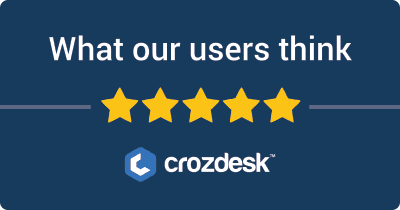
Hotjar and Amplitude are two prominent tools in the realm of analytics that serve different but complementary purposes for businesses aiming to enhance their digital experience. Hotjar focuses on understanding user behavior through heatmaps, session recordings, and feedback tools, making it ideal for optimizing user experience and engagement on websites. In contrast, Amplitude is a product analytics platform that provides in-depth insights into user interactions and product usage metrics, enabling businesses to make data-driven decisions regarding product development and marketing strategies.
Users commonly consider these tools to gain actionable insights that drive user satisfaction and retention. Hotjar is often chosen for its ease of use in visualizing user behavior, while Amplitude is favored for its robust analytical capabilities and data exploration features.
Key aspects for comparison include:
- Features: Analysis of the tools’ core functionalities and how they meet user needs.
- Pricing: Overview of pricing structures and value for money.
- Ease of Use: User interface and overall experience in navigating the tools.
- Integration: Compatibility with other systems and tools.
- Support: Availability of customer support and resources for users.
This comparison will aid users in determining which tool aligns better with their specific analytics requirements.
Hotjar VS Amplitude: Which tool is the most popular?
| Tool | Number of Reviews | Average Rating | Positive Reviews | Neutral Reviews | Negative Reviews |
|---|---|---|---|---|---|
| Amplitude | 32 | 3.17 | 19 | 2 | 11 |
| Hotjar | 10 | 2.5 | 4 | 0 | 6 |
Amplitude is the more popular tool based on the number of reviews, with a total of 32 compared to Hotjar’s 10. Amplitude also has a higher average user rating of 3.17, indicating a more favorable perception overall. In contrast, Hotjar has an average rating of 2.5, with a significant number of negative reviews (6) compared to its positive reviews (4), reflecting lower overall satisfaction among its users.


Hotjar and Amplitude: Quick Comparison Overview
| Feature/Aspect | Ahrefs | SEMrush |
|---|---|---|
| Primary Features | – Site Explorer – Keyword Explorer – Backlink Checker – Content Explorer – Rank Tracker |
– Keyword Research – Site Audit – Position Tracking – Content Analyzer – Marketing Insights |
| Target Audience | – SEO professionals – Digital marketers – Agencies focusing on content marketing and backlink analysis |
– Digital marketers – SEO experts – Content marketers – Social media marketers and PPC specialists |
| Main Advantages | – Robust backlink analysis – Comprehensive keyword data – Intuitive user interface – Constantly updated index |
– All-in-one digital marketing tool – Extensive competitor analysis – Wide array of tools for SEO and PPC – Integrated social media management |
| Core Value Proposition | Focused on providing in-depth SEO insights, particularly strengths in backlink profiles and organic keyword rankings. Ideal for users prioritizing content strategy and link-building efforts. | Offers a holistic view of digital marketing, making it easier to manage all aspects of online presence through an extensive range of tools for SEO, PPC, and social media marketing. |
| Ideal Use Cases | – Conducting comprehensive link audits – Developing effective content strategies – Tracking backlinks and organic rankings – Keyword planning for SEO campaigns |
– Managing and optimizing PPC campaigns – Conducting competitive analysis for market positioning – Comprehensive content analytics and SEO tracking – Social media metrics and management |
Most liked vs most disliked features of Hotjar and Amplitude
| Tool | Most Liked Features | Most Disliked Features |
|---|---|---|
| Hotjar | – Quick and effective support noted for issue resolution. – Aids in understanding user interactions, enhancing website performance. – Easy to use with straightforward integration. – Provides valuable insights fulfilling its purpose. – Offers a comprehensive suite of tools like heatmaps and surveys. |
– Significant dissatisfaction with recent price hikes deemed unjustified. – Documentation and user interface require enhancement. – Challenges in capturing user behavior in specific areas. – Discrepancies observed in advertised versus actual session limits. – Long-term users express disappointment with the company’s shift in focus and values. |
| Amplitude | – Generally praised for its user experience, labeled as ‘amazing’ and ‘user-friendly.’ – Value of extensive free plan beneficial for small businesses and startups. – Deep analytical capabilities enable insights into user behavior and product usage. – Reliable and helpful customer service improves overall experience. – Noted for frequent updates and improvements tailored to evolving needs. |
– Frustration over difficulties in data mobility in and out of the platform. – Some advanced features can overwhelm non-analysts despite user-friendly design. – Lack of clarity in pricing structures across different tiers. – Limited access to customer support for lower-tier plans. – Dashboard customization options reported as somewhat limited despite many capabilities. |
Key Features of Hotjar vs Amplitude
Here’s a comparison of key features of Hotjar and Amplitude, two prominent analytics tools, along with their benefits and unique aspects:
Hotjar
1. Heatmaps
- Benefit: Visual representation of user behavior on a webpage, showing clicks, taps, and scrolling patterns.
- Unique Aspect: Allows users to see exactly where people interact with their site, identifying popular and ignored areas, which aids in enhancing user experience and optimizing design.
2. Session Recordings
- Benefit: Records individual user sessions, providing insights into user behavior in real-time.
- Unique Aspect: Helps in understanding user journeys and pinpointing usability issues by visually demonstrating how users navigate through the site.
3. Surveys and Feedback Polls
- Benefit: Collects user feedback directly from the site to understand user expectations and pain points.
- Unique Aspect: The ability to trigger surveys during specific user interactions offers contextual feedback, which refines user research.
4. Conversion Funnels
- Benefit: Analyzes user flow and drop-off points to understand how users reach or fail to reach conversion goals.
- Unique Aspect: Provides a clear visualization of where users lose interest, enabling targeted optimization efforts.
5. Form Analysis
- Benefit: Evaluates form completion rates, identifying fields that cause friction.
- Unique Aspect: Provides insights into which fields are frequently abandoned, facilitating improvements to lead generation forms.
6. User Insights API
- Benefit: Allows developers to integrate feedback and engagement data into other tools or workflows.
- Unique Aspect: Enables customization and deeper integration with existing infrastructure and analytics frameworks.
Amplitude
1. User Segmentation
- Benefit: Allows businesses to segment users based on behaviors, attributes, or demographics for targeted analysis.
- Unique Aspect: Offers real-time segmentation to adapt strategies based on user activity promptly, enhancing decision-making.
2. Behavioral Cohorting
- Benefit: Groups users based on shared behavioral patterns over time.
- Unique Aspect: Enables companies to track the performance of different user groups, allowing for tailored marketing and product strategies.
3. Funnels
- Benefit: Analyzes the user journey from initial engagement to conversion, identifying drop-off points.
- Unique Aspect: Supports multi-step funnels and allows for dynamic updating, making it easier to assess campaign effectiveness.
4. Retention Analysis
- Benefit: Measures how well a product retains users over designated periods.
- Unique Aspect: Offers deeper insights into the factors influencing user retention and churn, helping businesses to refine user engagement strategies.
5. A/B Testing
- Benefit: Facilitates experimentation with different versions of features to determine what works best.
- Unique Aspect: Integrates directly with user analytics to provide feedback on performance based on user interactions, leading to data-driven decisions.
6. Integration Capabilities
- Benefit: Connects with multiple popular tools (like Slack, Salesforce, and Segment) to centralize data analysis.
- Unique Aspect: Offers comprehensive integration options that encompass a broad range of functionalities across marketing and analytics tools.
Summary
Both Hotjar and Amplitude offer powerful analytics tools, but their key features cater to different needs:
-
Hotjar focuses primarily on qualitative research with visual insights, emphasizing user experiences through features like heatmaps and session recordings. It’s particularly beneficial for UX/UI improvements and immediate user feedback.
-
Amplitude, on the other hand, emphasizes quantitative analytics and user behavior insights, making it advantageous for understanding long-term engagement and retention through features like behavioral cohorting and retention analysis.
Ultimately, the choice between Hotjar and Amplitude will depend on whether users are looking for qualitative insights into user behavior (Hotjar) or more quantitative data for analyzing user interactions and retention trends (Amplitude).
Hotjar vs Amplitude Pricing Comparison
| Feature | Hotjar Pricing | Amplitude Pricing |
|---|---|---|
| Free Tier | Yes, with limited features | Yes, with limited features |
| Basic Plan | $39/month (billed annually at $390/year) | $995/month (billed annually at $9,950/year) |
| Growth Plan | $99/month (billed annually at $990/year) | $2,000/month (billed annually at $24,000/year) |
| Business Plan | $389/month (billed annually at $3,890/year) | $5,000/month (billed annually at $60,000/year) |
| Enterprise Plan | Custom pricing available | Custom pricing available |
| User Sessions | Basic: 2,000 sessions/month | Basic Plan: 3M monthly events |
| Growth: 10,000 sessions/month | Growth Plan: 100M monthly events | |
| Business: 50,000 sessions/month | Unlimited events with Enterprise Plan | |
| Features Included | Heatmaps, Visitor Recording, Feedback polls, | Advanced Analytics, Cohort Analysis, Retention Analysis, |
| Conversion funnels, Form analysis | Custom Behavioral Segmentation | |
| Data Retention | Up to 365 days for Business Plan | 1 year for Growth Plan and unlimited for Enterprise |
| Integrations | Basic Integrations for all plans | Various Integrations available, more for higher tiers |
| Free Trial | 14-day free trial on paid tiers | No free trial available |
| Discounts | 20% discount on annual billing | Discounts for annual subscriptions but not specified |
Main Differences in Offerings:
- Price Range: Hotjar is significantly less expensive than Amplitude, with its most basic plan starting at $39 compared to Amplitude’s $995.
- Session Limitations: Hotjar’s plans focus on sessions recorded, while Amplitude is centered on monthly event tracking.
- Analytics Depth: Amplitude has a more comprehensive set of analytics features geared towards product analytics as opposed to Hotjar’s focus on user feedback and session recordings.
- Data Retention: Hotjar offers limited data retention periods depending on the plan, whereas Amplitude offers longer retention for some features in their higher tiers.
- Integrations & Customization: Amplitude provides a wider range of integrations and features at a more granular level for optimized product analytics, particularly at higher tiers.
Support Options Comparison: Hotjar vs Amplitude
| Support Option | Hotjar | Amplitude |
|---|---|---|
| Live Chat | Available for customers on paid plans. | Available for all users as a chat option. |
| Phone Support | Not offered. | Not offered. |
| Documentation | Extensive knowledge base accessible to all users. | Comprehensive articles and guides available for all users. |
| Webinars/Tutorials | Regular webinars and tutorials provided for users, focusing on product features and best practices. | Offers tutorials, webinars, and rich resource guides targeting various use cases. |
Unique Features of Hotjar Vs Amplitude
| Feature | Hotjar | Amplitude | Added Value |
|---|---|---|---|
| Heatmaps | Visual representation of user interactions on a page, showing where clicks, taps, and scrolling occur. | N/A | Provides direct insight into user behavior, allowing for data-driven design improvements based on actual user interactions. |
| Visitor Recordings | Session recordings that capture real user interactions with the site, showing mouse movements, clicks, and scrolling. | N/A | Helps identify usability issues by observing the real-time navigation of users, enabling targeted UX enhancements. |
| Conversion Funnels | Visual tool for tracking user behavior through defined paths leading to conversion. | Advanced funnel analysis for different user cohorts. | Simplifies the process of understanding where users drop off in the conversion process, allowing for optimized user flow. |
| Feedback Widgets | Tools for collecting user feedback directly on the site, including surveys and polls. | N/A | Enables direct communication with users, allowing companies to gather qualitative insights that complement quantitative data. |
| Incoming Feedback | Allows users to express their thoughts and suggestions on the product or service through polls and surveys. | N/A | Provides essential qualitative data to improve product features based on user input, enhancing user satisfaction and retention. |
| User Segmentation | Limited segmentation capabilities based on qualitative feedback or behavior. | Robust behavioral segmentation available. | Allows detailed targeting and analysis based on user actions, improving the understanding of user needs and preferences. |
| Journey Mapping | Visualizes the user journey through key touchpoints, combining qualitative and quantitative data. | N/A | Helps teams to better understand the overall user experience, facilitating holistic strategy improvements. |
| Retention Analysis | Basic retention metrics focusing on feedback-driven insights. | Advanced user retention metrics and behavioral analysis. | Increases the effectiveness of retention strategies by leveraging deep behavioral insights and cohort analyses. |
| Integration Abilities | Limited integrations with other tools focused mostly on feedback collection. | Extensive integrations with other analytics and marketing tools. | Enables a connected ecosystem for comprehensive data analysis and marketing strategies, maximizing the utility of collected data. |
Unique features of Hotjar primarily focus on qualitative data collection methods, such as heatmaps, session recordings, and feedback widgets, which provide a more user-centric view of product interactions. In contrast, Amplitude excels in comprehensive quantitative analysis and advanced user segmentation, making it especially strong for teams looking to make data-driven decisions based on user behavior at scale. The decision between these tools may depend on whether the organization values qualitative user insights or advanced quantitative analytics more highly in their strategy.


